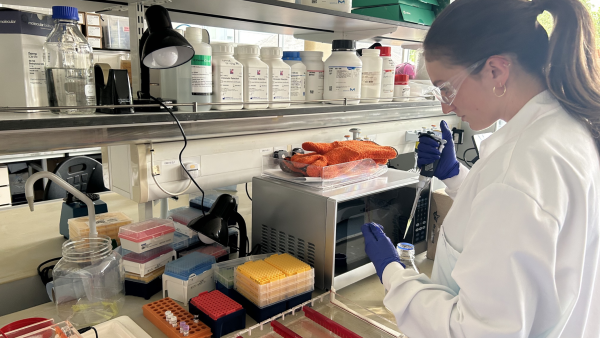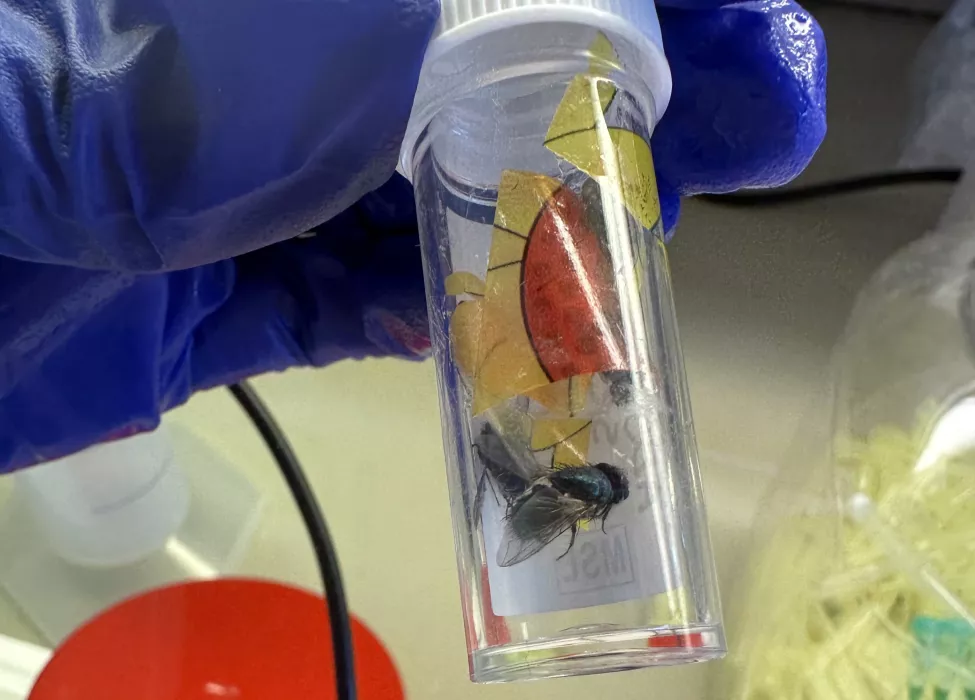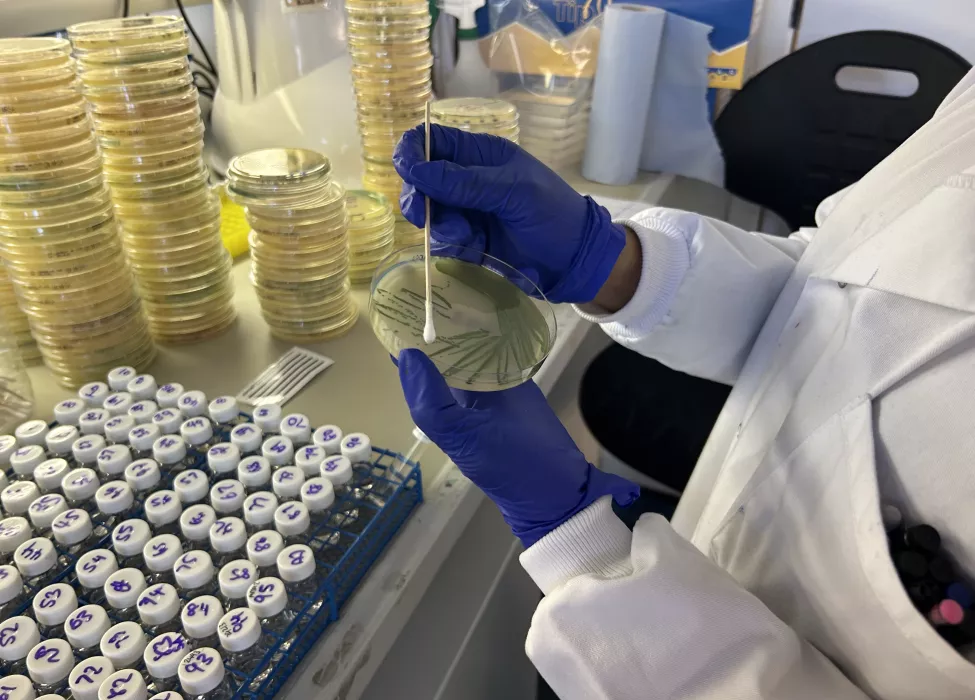
The IOI AVIAR project is building a global profile of the antibiotic resistance genes carried by flies. Teresa Iannetelli is a Research Assistant working on the AVIAR study.
Read along to learn what Teresa gets up to in the lab, and how the AVIAR study is working to reduce the global burden of antibiotic resistance.
How do your days usually start?
First things first when I come into the lab I check if we have any fly deliveries to pick-up. The AVIAR study partners with hospitals in over 100 countries to collect data, including flies, for analysis which is done here in Oxford. Over the course of the study, we’re expecting to process and analyse over 32,000 flies, so there are always new samples arriving!

Why are you collecting flies?
As microbiologists we’re interested in the fly’s microbiome, the community of bacteria that live in and on the insect. This is because we want to understand if the fly carried any antibiotic-resistant bacteria.
We’re not entomologists, so we’re not specifically looking at the insects themselves, although it is fun to see the different variety of flies that have been trapped in hospitals and sent to us.
How do you look at the fly’s microbiome?
To find out which bacteria make up the microbiome we make fly soup, which is essentially mashing the flies up. From there we streak the juice onto agar plates, which each contain a different antibiotic. Then if any antibiotic-resistant bacteria grow on a specific plate, we check which antibiotic was present and can confirm the specific fly was carrying the resistant bacteria.

From there we complete more steps to confirm the species of bacteria, including a PCR to identify the specific antibiotic-resistance gene. The PCR test is using the same technology as the PCR COVID tests that most people will have experienced – only here we’re looking to confirm the presence of antibiotic resistance, not COVID.
Finally, we then want to find out the minimum inhibitory concentration (MIC) for determining thresholds of resistance. This means, we want to understand how much antibiotic is required to stop the growth of this specific strain of bacteria. This will tell us whether the bacteria are classified as resistant and how affective their specific resistance gene is at causing resistance.
Once we reach the end of this process then it's onto the next fly sample! When we carry out this process on flies collected from hospitals across the world, we start to build a picture of the types of antibiotic resistance found in those hospitals.
Why do you want to know if the flies are carrying drug-resistant bacteria?
If flies are carrying drug-resistant bacteria in hospitals, they may be spreading these bacteria to patients. Multidrug-resistant infections are becoming increasingly difficult to treat with antibiotics, because the bacteria resist the drugs and stop them from working to kill the bacteria and therefore successfully treat the infection.
How is AVIAR aiming to reduce the global burden of AMR?
Antimicrobial resistance is a huge issue to which there is no simple solution. Doctors are running out of antibiotics that can effectively treat multidrug-resistant infections, and meanwhile pharmaceutical companies are struggling to develop new ones.
So, if we can interrupt this chain of transmission by using fly nets, or increasing fly traps around the hospital, then this is a relatively easy way to reduce antibiotic-resistant infections.
